Steam Power
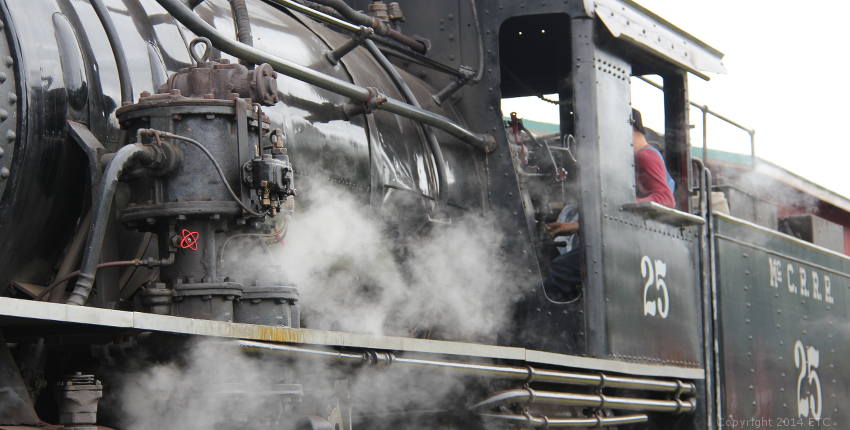
The steam locomotive is a marvel of mechanical engineering and was clearly a world-changing technology. The field of mechanical engineering and heat transfer engineers started as a result of the development of the steam locomotive.
Reciprocating Steam Engines (Piston Steam Engines):
There are basically two kinds of steam engines, the reciprocating engine, and the steam turbine. The reciprocating engine works on steam or internal combustion (diesel/gasoline) creating pressure and pushing a piston. The steam turbine is used mainly for making electric power and uses pressure against blades on a rotor, it is more efficient than a piston engine but was not used for locomotives.
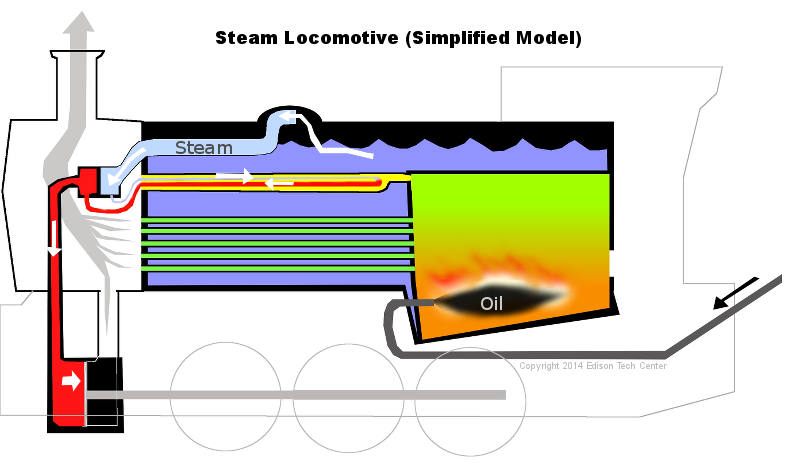
When water and air are heated steam is created, steam expands and therefore creates pressure when inside a vessel. The steam is channeled into the piston and pushes the piston back, this has a link to the wheels and creates forward or backward motion.
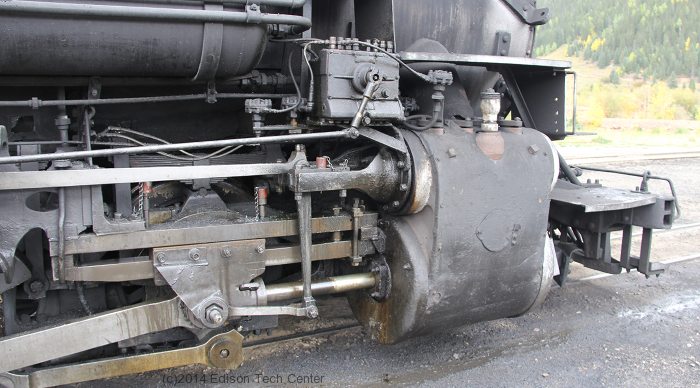
Linkages are controlled by the 'engineer' of the train. They can
control backwards / forwards motion, speed and brakes. The Fireman sits
to the left of the 'engineer' in the cab of the locomotive, he/she
controls the intake of fuel, temperature, steam/water, and pressure
levels. See the jobs of the operators in action in our video lower on
this page.
Below: Durango and Silverton Railroad getting ready to leave the station

Below: Learn how a steam locomotive is operated and how it works in our video of the Oregon Coast Scenic Railroad
Fuel:
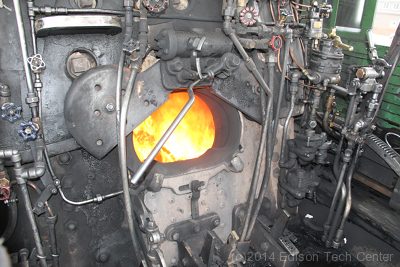 Coal is still hand shoveled at the Durango and Silverton RR. Before much of the 19th century forests had been denuded wood was a main fuel source in frontier areas. | When most people think of steam locomotives they think of coal being shoveled into a fiery hole in the cab. This is only one configuration. Steam engines can run on anything that burns: wood, coal, oil, even garbage. Steam engines operating in the Western mountains far from the Pennsylvania coal deposits often operated using logs. Wood and coal were used concurrently until technology was developed that allowed oil to be used. Oil powered the greatest locomotives in history, locomotives like the Big Boy. Oil is pumped into the firebox and sprayed into the fire... actually i is atomized using a mix of air and hot steam injected into the flow. Oil is now how most steam locomotives still in operation work due to the convenience of the fuel. Combustion proved to be the downfall of steam locomotives, so much energy is lost through heat that eventually the diesel-electric locomotive made much more sense for hauling needs. |
Engineering and Steam Locomotives:
The ASME (American Society of Mechanical Engineers) was founded in 1800 in order to help set regulations for building steam engines as well as help educate designers of engines so that the overall level of understanding in all mechanical engineers was of a certain standard.
Designers of steam engines were talented but lacked a well rounded education on physics and materials issues. Steam engines were blowing up and killing many people and this is what drove the need for better engineering. The pressure of steam on boilers and their pipes, and the effect of heat on steel are both extremely difficult concepts of physics. With a background in physics and materials science mechanical engineers could then design lighter machines that were sturdy and heavy in all the needed places, able to handle a rated load and higher, while also saving material and energy by using less raw materials on other parts of the machine. The improvements in design coincided with improvements in materials engineering, in this case better steels which could be made into thinner parts and yet handle higher pressures.
Air Brakes:
Learn about the air brake and George Westinghouse on our page here >
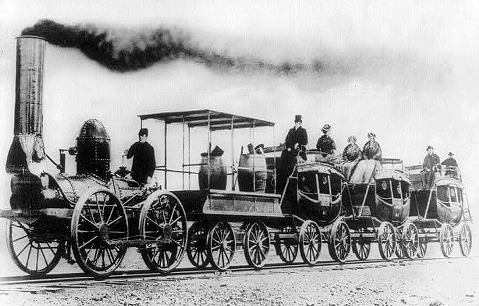
History:
Piston steam engines were first developed in the 1720s however it wasn't until the first decades of the 1800s that the steam engine was mounted on a car and designed specifically for use in hauling goods and people. The DeWitt Clinton (pictured above) was one of the first locomotives in North America. It offered passenger service between Schenectady and Albany, New York as a way to bypass the slow locks of the Erie Canal at Cohoes Falls area. A replica of the train can be seen at the Henry Ford Museum.
Later on the American Locomotive Company (ALCO) emerged as a conglomeration of many smaller locomotive manufacturers. The massive plant at Schenectady, NY produced some of the largest locomotives in history.
During the 1940s and 50s steam locomotives saw a decline as the more efficient diesel locomotive replaced them. Steam locomotives stayed in mainstream use in third world markets for some time after that. Seeing a steam locomotive in action is quite an impressive experience.
You can read more about the history of steam trains HERE
Here are some places where you can still see them in operation in the form of scenic railroads:
Mount Washington, New Hampshire
Tonawanda, New York
Blowing Rock, North Carolina
Chippewa Valley Railroad, Wisconsin
Georgetown, Colorado
Durango, Colorado
Essex Valley Railroad, Connecticut Tillamook region, Oregon
Check an updated database of operational steam trains by state HERE
Below: The Cumbres and Toltec Scenic Railroad rides between Colorado and New Mexico
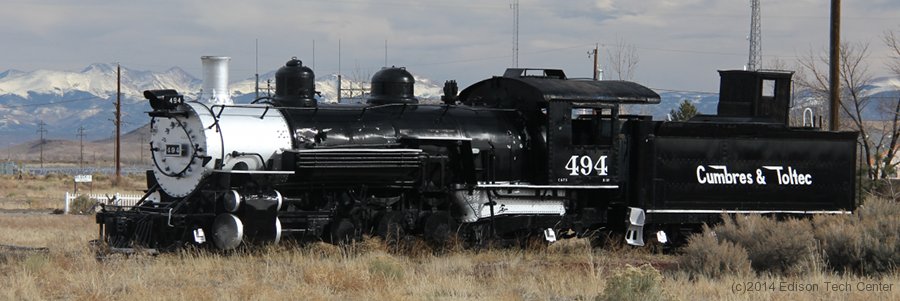
No comments:
Post a Comment